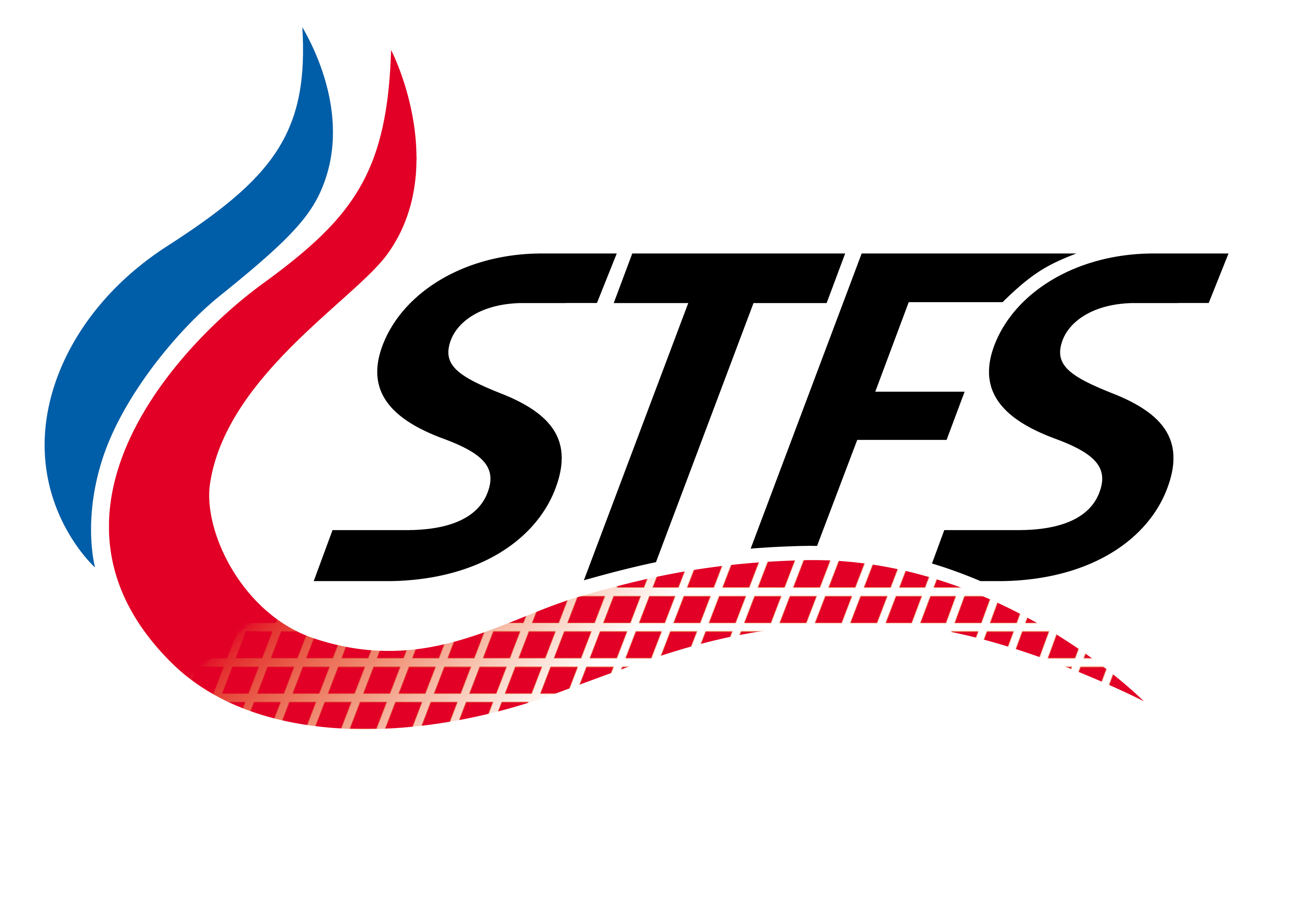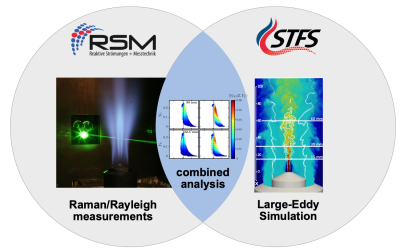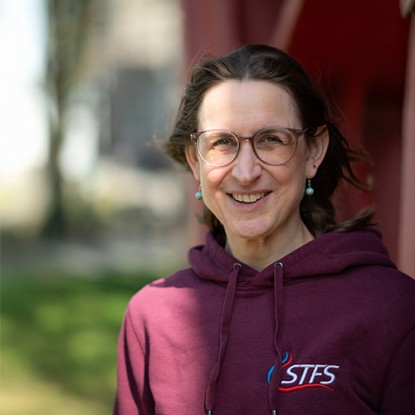We refer to the close cooperation with the Institute of Reactive Flows and Diagnostics (RSM) at the TU Darmstadt as the Darmstadt model. The unique characteristic is that simulations and experiments are organized in two specialized areas that cooperate closely with each other. At the STFS we investigate reactive thermo-fluid systems using simulations, while at the RSM these are investigated experimentally using state-of-the-art measurement technology. We have developed digital models of many of the test stands operated at the RSM, with which we can gain even deeper insights into the processes taking place thanks to a very high spatial and temporal resolution and the ability to simultaneously investigate a large number of physical quantities. The data from the experimental investigations serve, among other things, as reference data to validate the results of the numerical simulations we carry out.
We are very successful with the Darmstadt Model. In the past and present, a large number of research projects, such as DFG Collaborative Research Centers, have been developed, created and funded on the basis of our collaboration from the initial idea through to realization. This is also reflected in a large number of joint publications.
Examples of studies and projects in which the Darmstadt Model has been successfully applied include the multi-regime burner shown in the illustration, which is used to investigate multi-regime combustion, and Clean Circles, a project in which the potential of iron as energy carrier in a carbon-free circular energy economy is investigated.
This interlinking of simulation and experiment is shown in detail in this video:
Combustion Webinar – Towards integrated inference from numerical and real experiments





